Making dollhouse furniture:
Stuart King talks us through how to make miniature furniture for any dolls house.
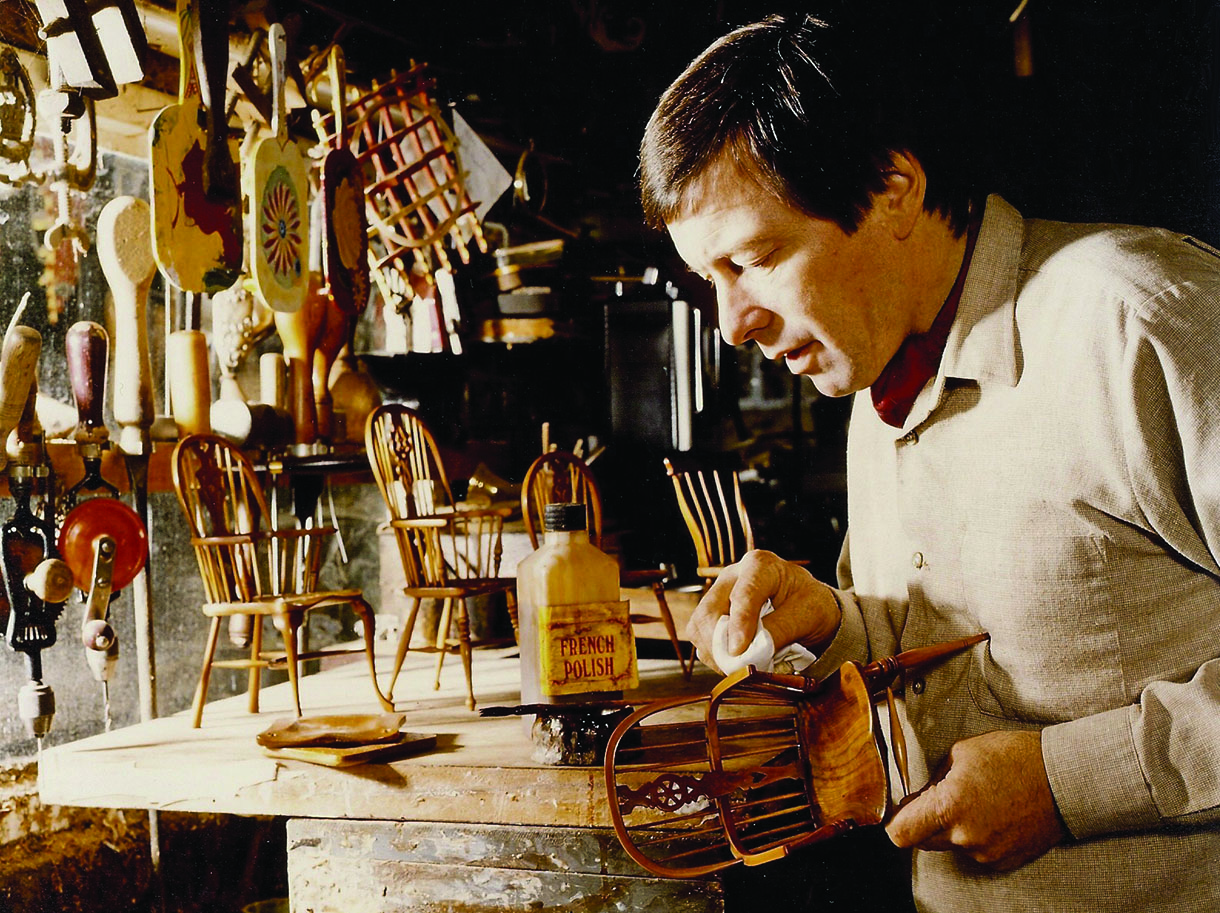
The finishing touches on some miniature furniture that I started making during my school years
Growing up in an era when it was usual for children to make things, and with Stuart King being a boy, this entailed creating model planes, boats, and items that would fit perfectly in his sister’s dolls house.
Most boys growing up were proficient with carving balsa wood and fret-sawing thin plywood into decorative objects and working models. If you were really fortunate, you might own a treadle fretsaw made by Hobbies of Dereham, this company also supplied weekly plans of things to make. Oh, happy days!
His childhood woodworking days were spent at a sunlit bench in his father’s workshop, but in the winter, Stuart spent his time woodworking at the kitchen table often sharing space with his mother while she prepared the next family meal. He recalls: “in retrospect, this seems such a simple, but privileged situation yet in the 50s, it was quite the norm,” but there were sometimes great rivalries between his schoolmates and himself in making the most intricate pieces. Pieces from plans or from their own designs, or just seeing whose simple balsa plane would fly the furthest.
Training
Leaving school aged 15, and training as a marquetry cutter, a craft that requires certain dexterity, good hand eye coordination and a good judgement of line. Just like model making! He says: “although I hate being in a harsh [furniture]factory environment, what I learnt there was to be very useful throughout my working life,” and living close to the ‘furniture town’ of High Wycombe, Stuart became interested in the history of the town’s furniture heritage. While he was still a teenager, Stuart started to give talks to local groups such as the Women’s Institute on the history of furniture. To illustrate his Windsor chair talk, Stuart has made a set of miniature chairs that he takes to venues in a suitcase, which turned out to be beginning of a lifetime of making things in wood. He starting with miniature furniture both ¼ scale, and the smaller 1/12th scales for dolls houses.
The doll’s houses are quite popular among young children today, but they can be traced back around 400 years. Smaller doll’s houses with more realistic exteriors appeared in Europe in the 18th century. Early doll’s houses were all handmade, but following the Industrial Revolution, and WW2, they were then mass produced and became more affordable. The earliest known examples of the doll house, or miniature homes, were found in the Egyptian tombs of the Old Kingdom created nearly 5000 years ago, but researchers believe these were purely for religious purposes. The earliest known European doll house was the baby house of the 18th century which were cabinet display cases made up of individual rooms. Smaller doll’s houses such as the Tate house appeared in Europe in the 18th century. Doll houses also used to be present at the royal courts, ducal palaces, and manors of rich aristocracy in Germany, France, Italy and England. The possibly most famous doll house is a version of an English Queen Mary’s house, took four years to complete and contained exact copies of real furniture, carpets, silver dishes and ivory decorations.
Although, doll houses are now known for being great children’s toys, this was not their original intention. They were miniature pieces of art performing various functions; their major function was to be decorative and representative. The furniture within a dolls house is made with skill and precision, and Stuart King talks us through creating these miniature pieces of furniture.
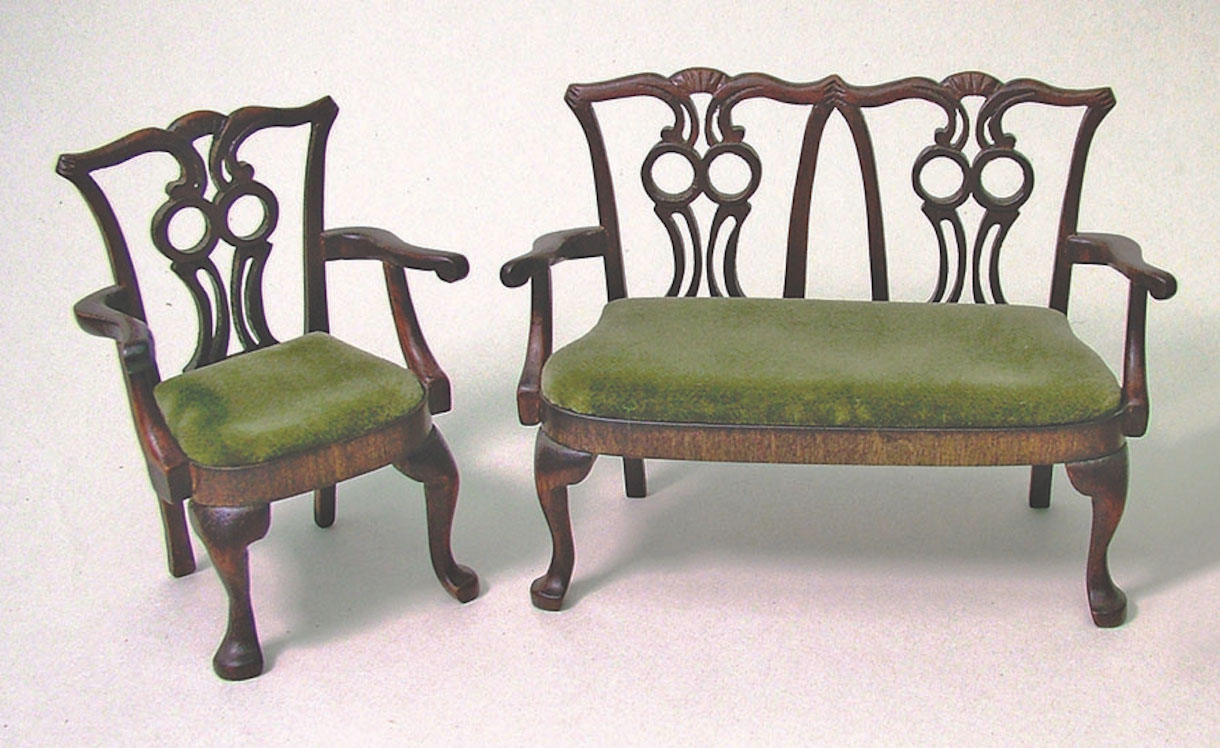
Robert Manwaring was an English 18th century furniture designer and cabinet maker whose great love was chairs
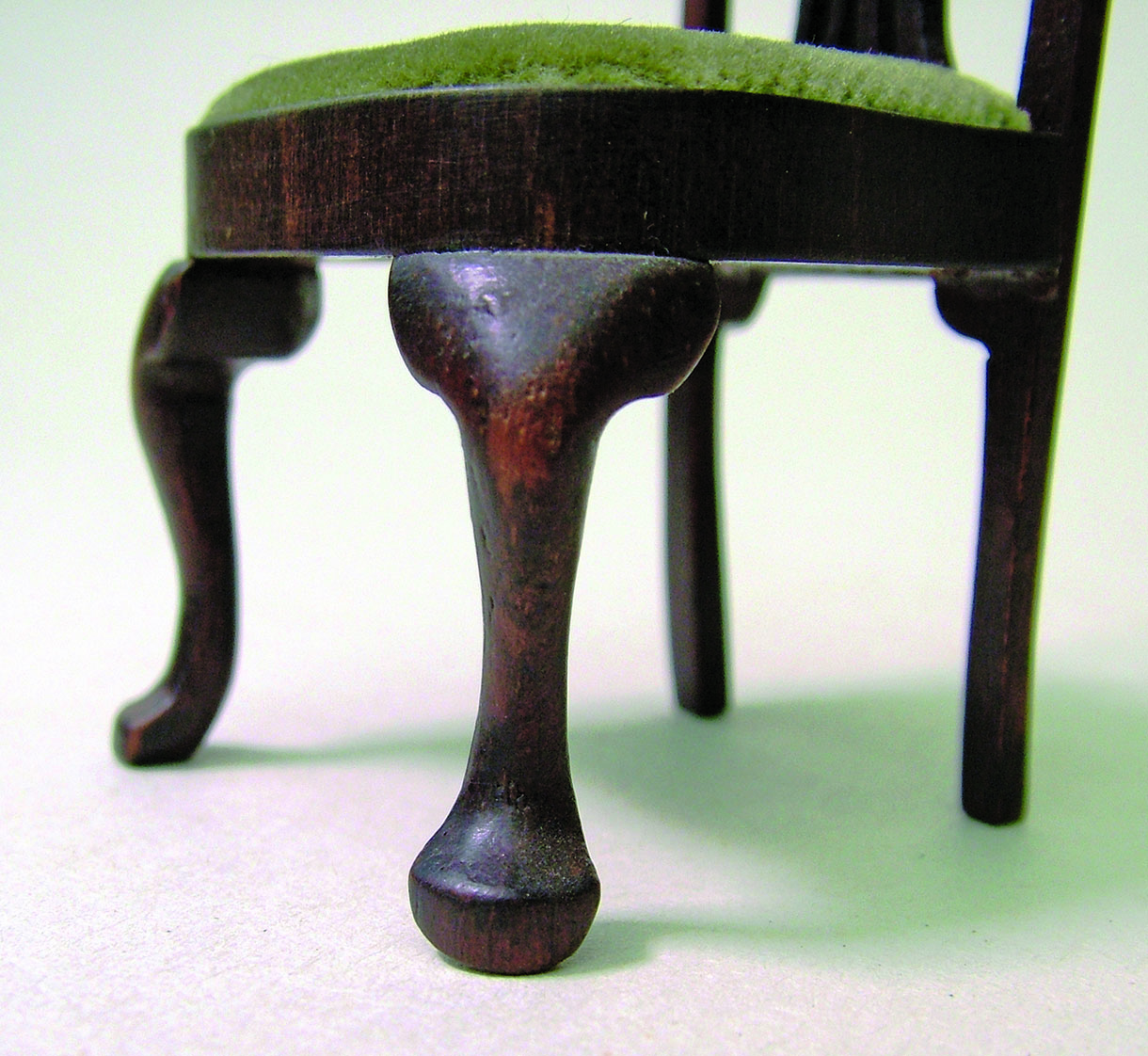
Completed cabriole leg
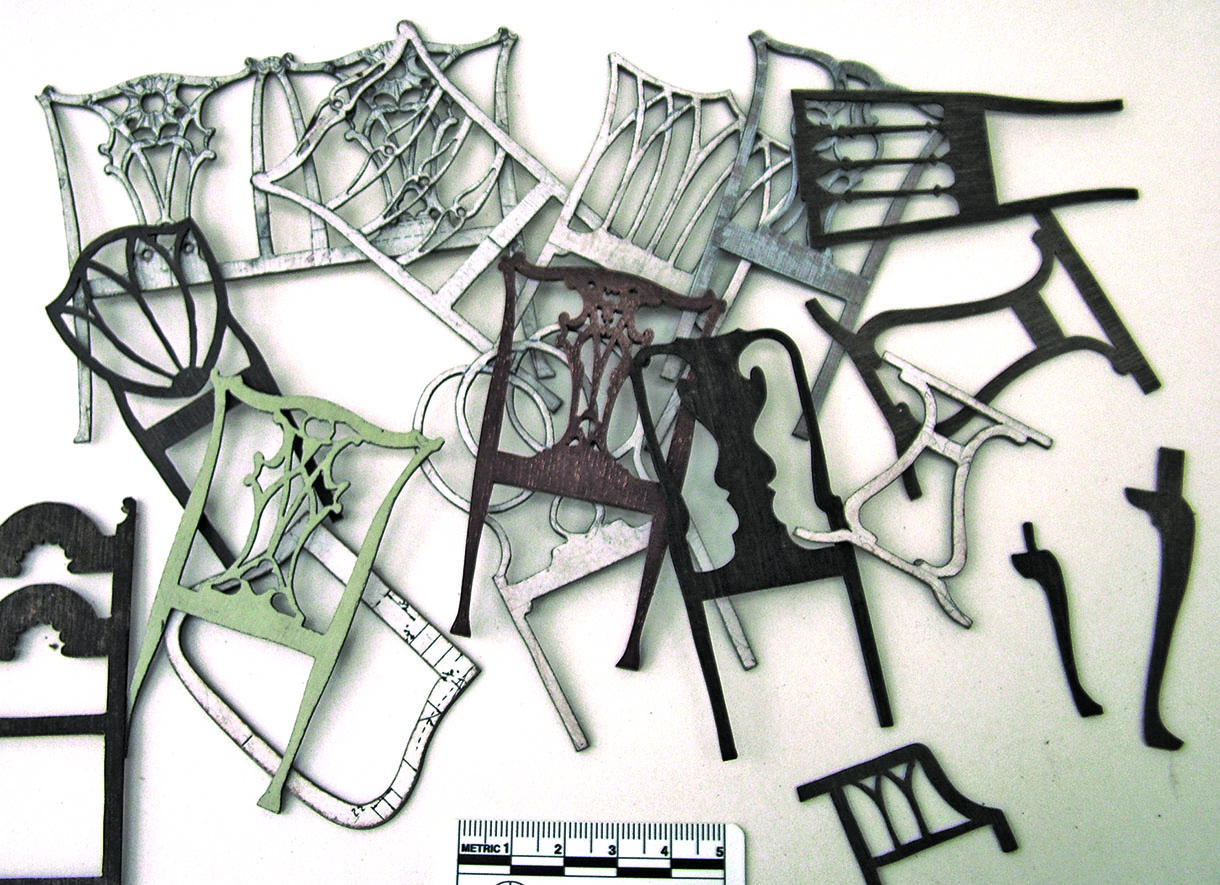
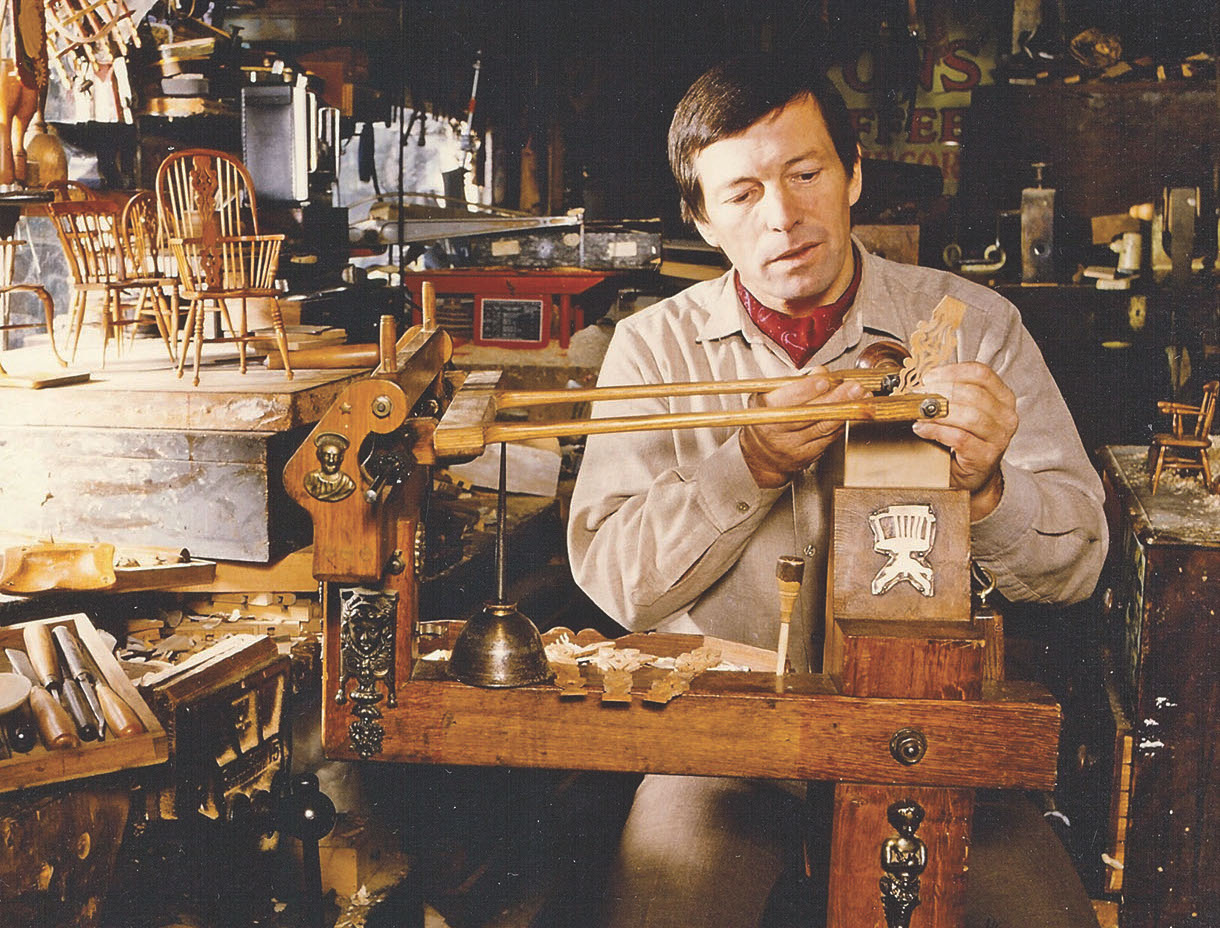
Fret-cutting a ¼ scale Windsor chair banister using my marquetry cutters ‘donkey’ c1982, making quarter scale miniature Windsor chairs was another mainstay of my work back then
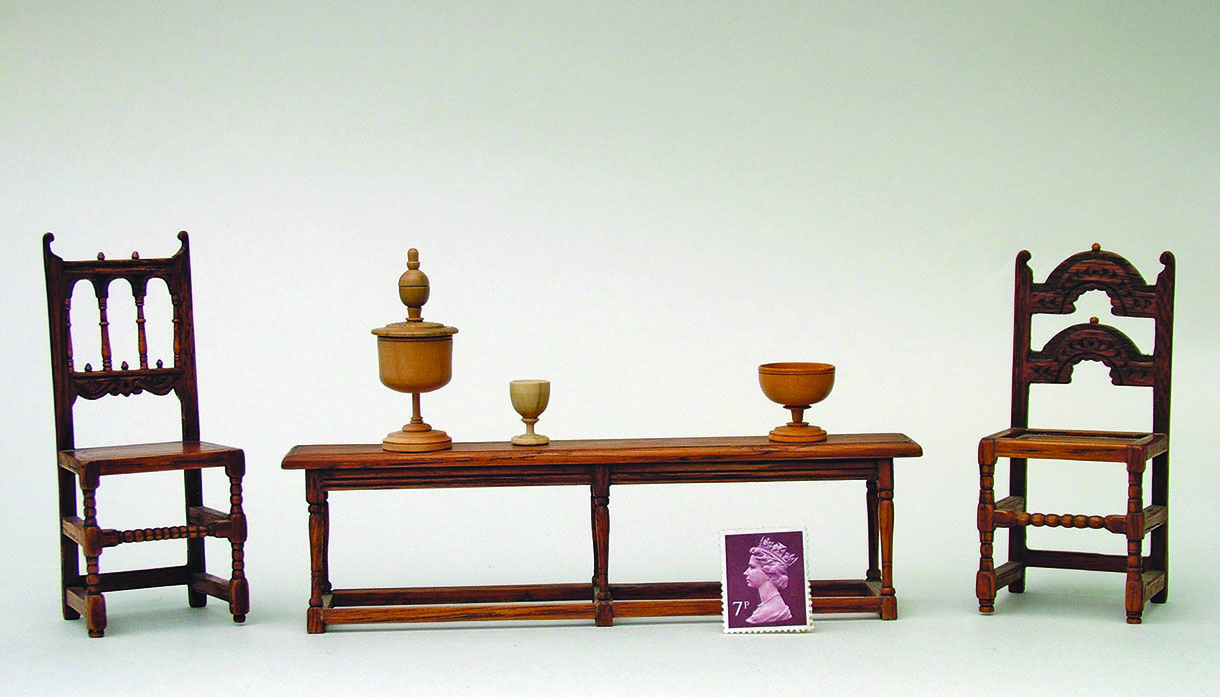
17th century chairs and joint form stool made in Japanese oak (Quercus mongolica), this was used because of it’s fine grain
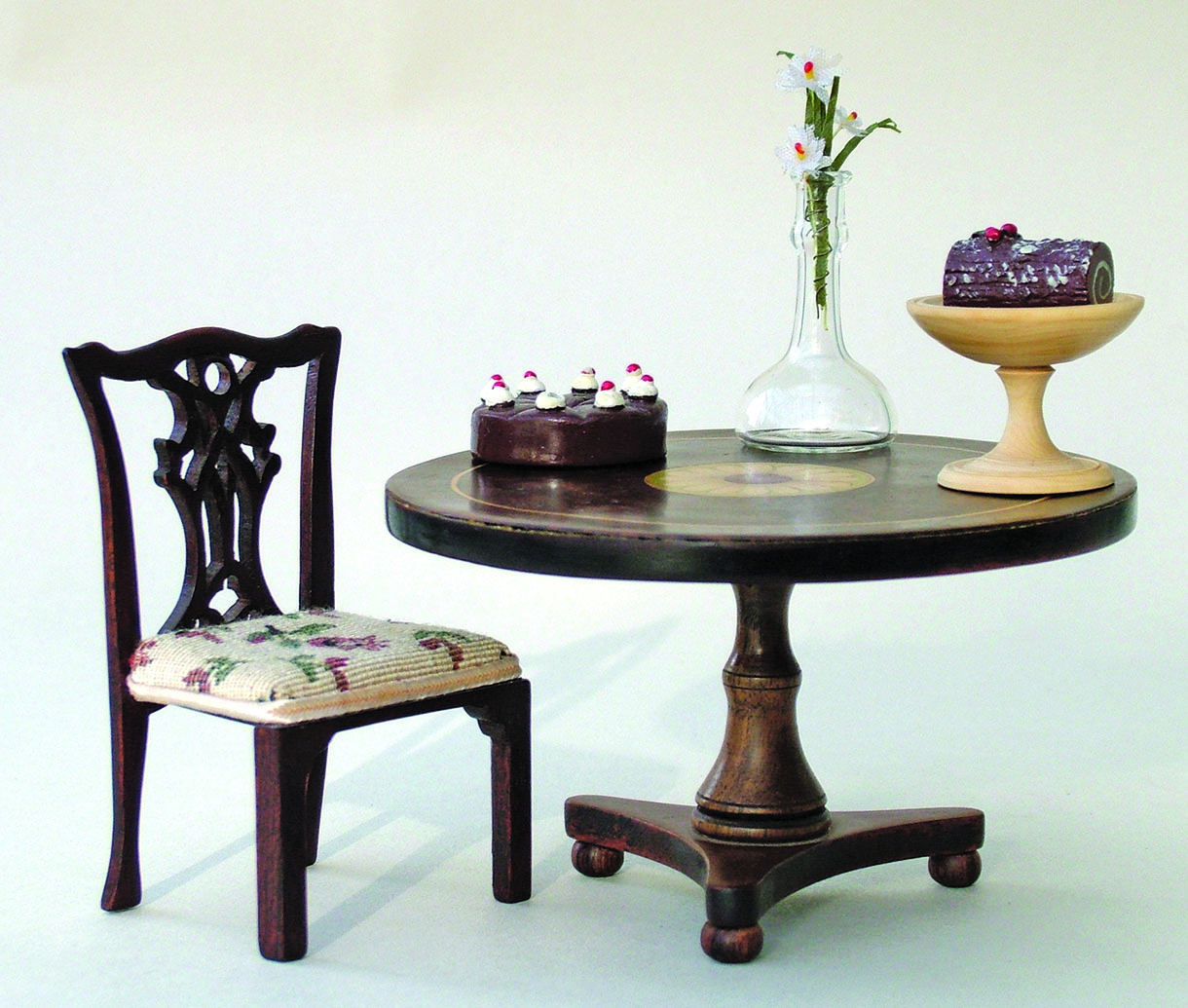
Chippendale chair and inlaid dining table
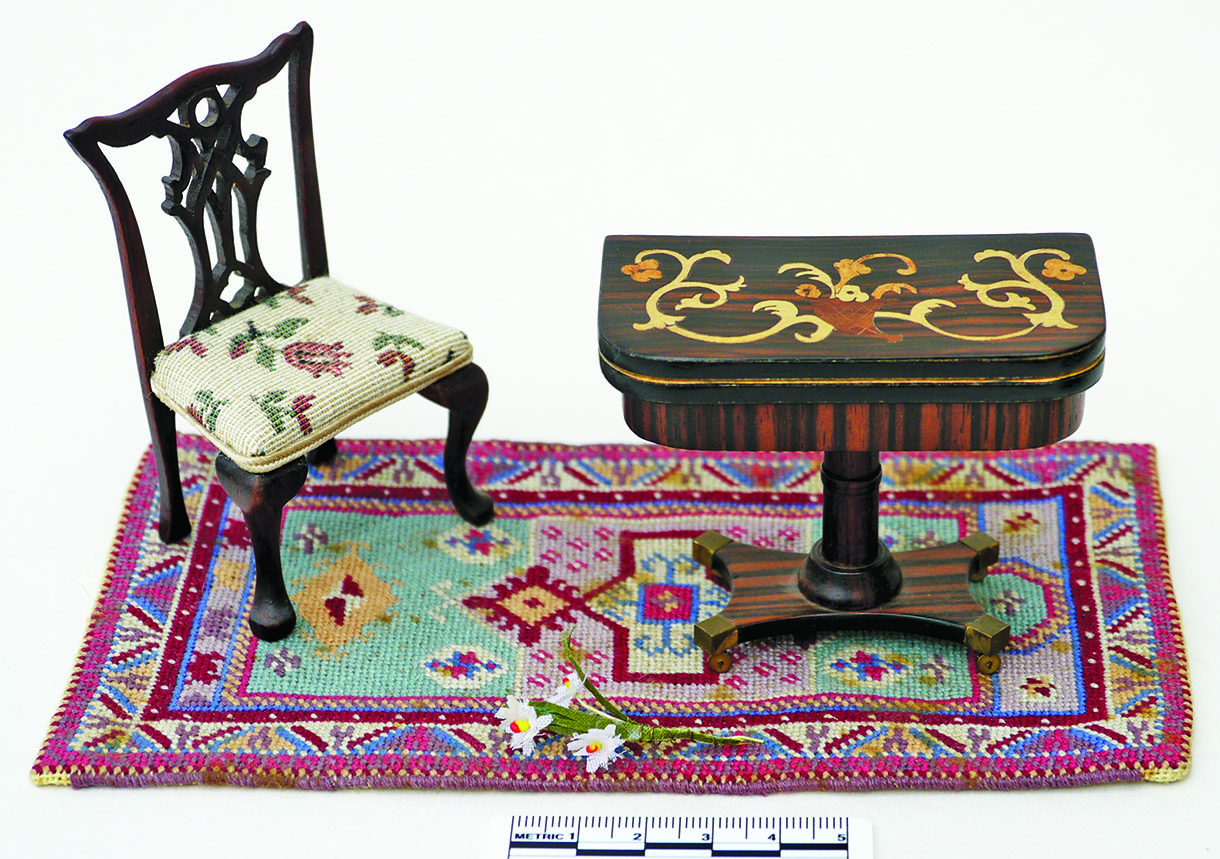
For the sophisticated household with a nice drawing room what’s better than to have a folding marquetry games table to while away those dark winter evenings? Stuart made this in 1981
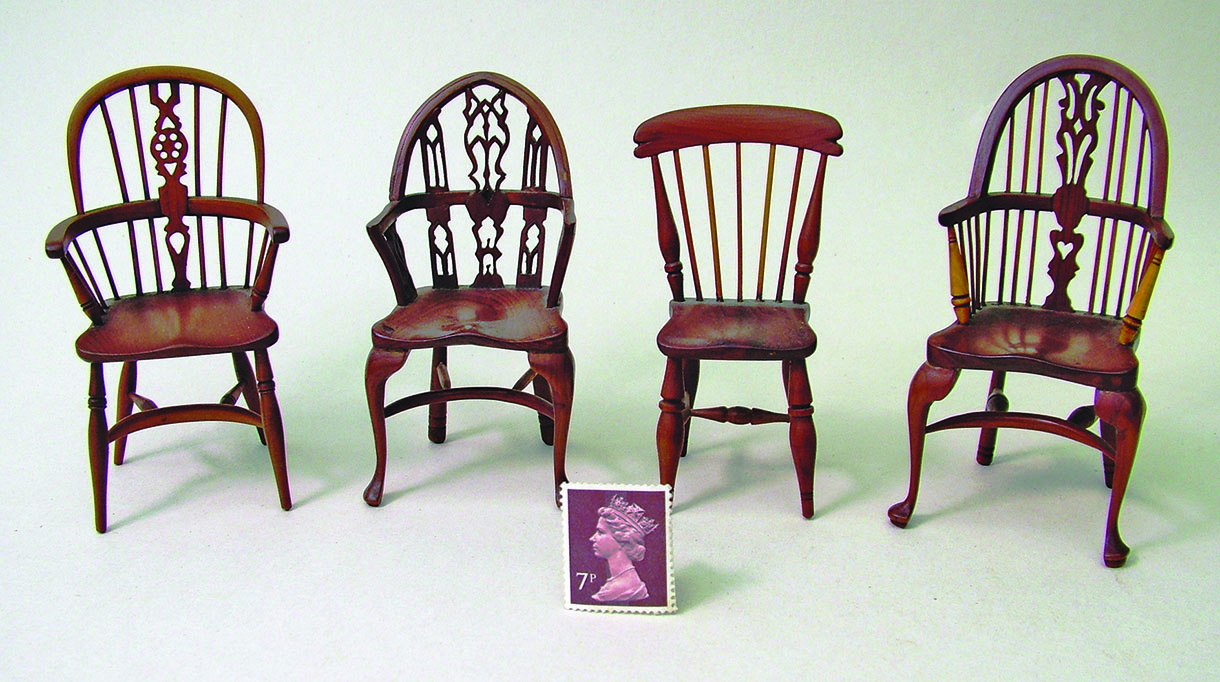
Just some of the variety of styles in my 1970/80’s Windsor chair range
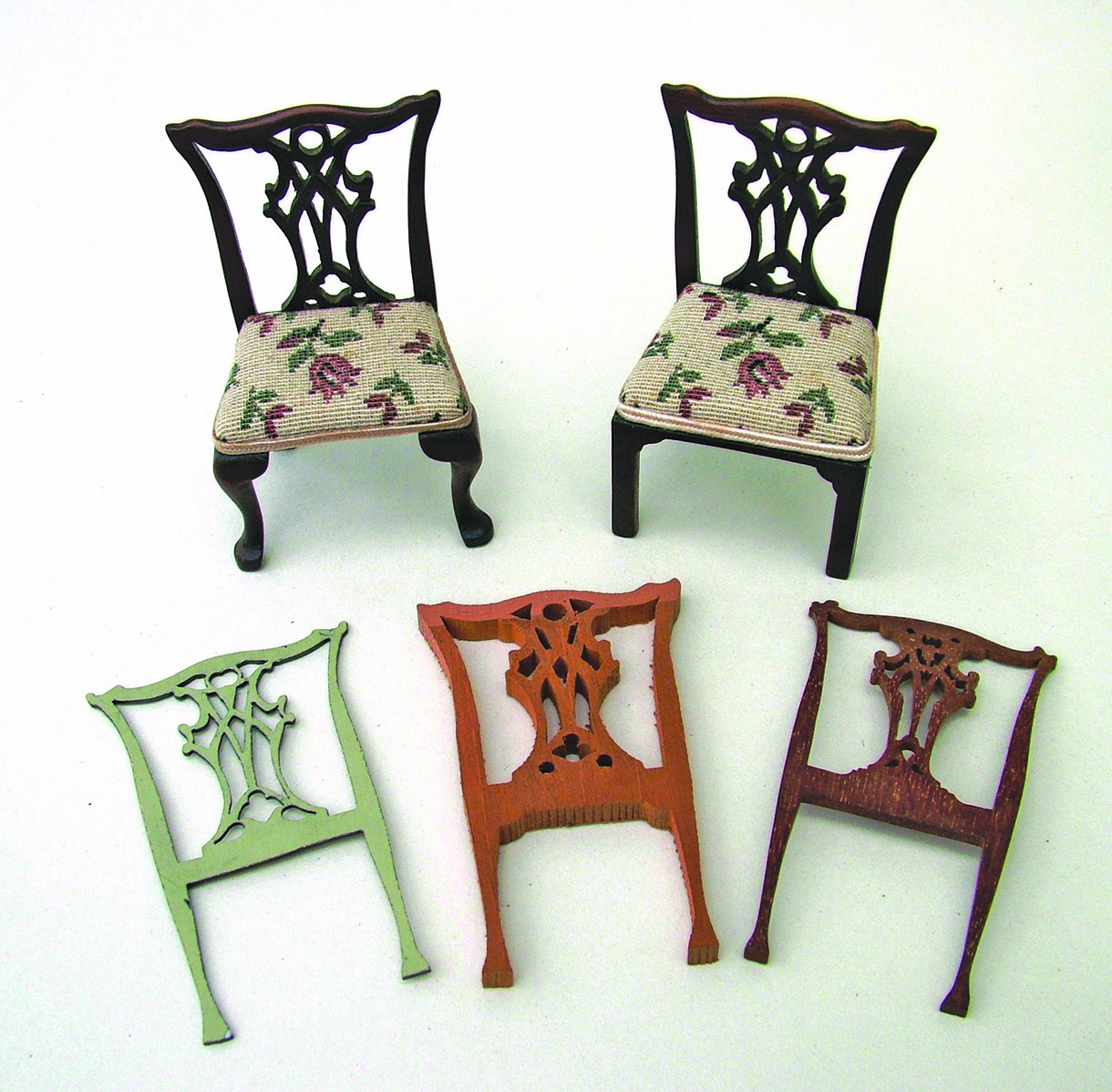
Chippendale style chairs. The back is the integral component and is made in two pieces starting with a strip of long grain glued to one end of the blank for the top rail
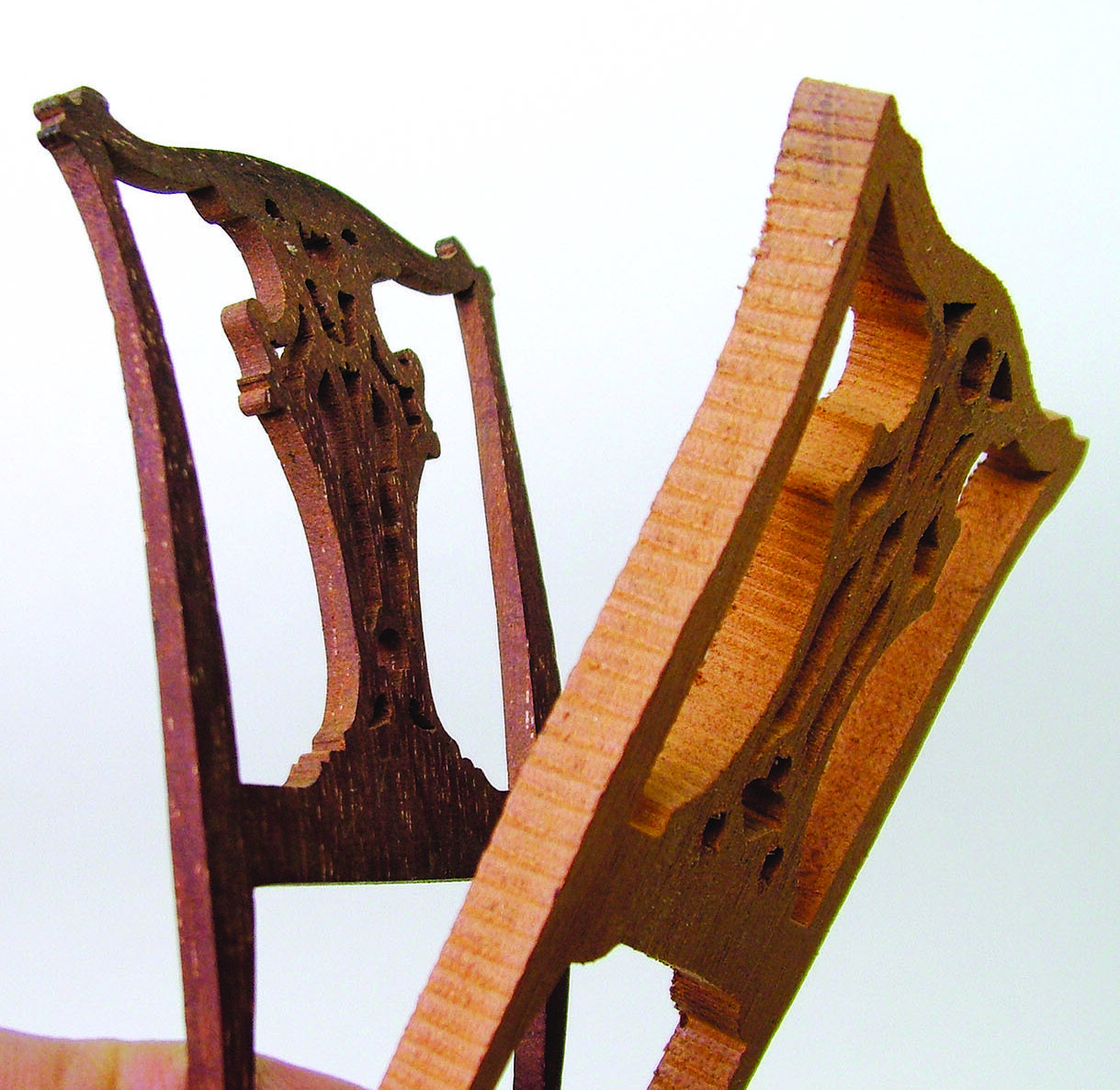
Before and after sanding the curved profile, the left hand piece is Cuban mahogany rescued from an 18th century table top, the other is Brazilian mahogany
Tools
Still having the tools and templates he so often used, Stuart would like to share some of his techniques with
the magazine. For every chair back, except Windsor chairs, he cut a template from formica, or 1/32 plywood. Mostly 18th century designs, mahogany (Khaya ivorensis) was his material of choice, which was always reclaimed from broken antique furniture. For the chair backs, Stuart cut the material to about 6mm thick, and the grain of the back should run from top to bottom with a horizontal slip glued to the area where the cresting rail would be. This provides maximum strength.
With the chair backs pierced, Stuart is “taken back to his fret work days.” Stuart often used a marquetry cutters ‘donkey’, but a hand held fretsaw or a scroll saw would also work. The curve (rake) of the chair was sanded on the end of a belt sander. The seat of a ‘stuffed over’ upholstered chair was cut from 3mm thick mahogany and butt jointed using PVA glue as was the front legs, cut in one piece. Stuart does say: “unless the front legs were to be cabriole, these were glued separately underneath,” these legs, after being marked out via a template were fret cut out on two sides of a square then rounded with needle files, and fine single sided scrapers and sanded.
Decorative mouldings are a lovely detail for any furniture large or small, and his solution to the age-old feature was “to miniaturise a traditional chair makers tool, the scratchstock.” Consisting of a two part wooden stock or handle held together with two screws that were used to tighten the blade, Stuart made the blades from an old chair making scrapers that, in turn, were made from worn out saw blades. Needle files were used to create the required profile, but in reverse of course. Stuart used a ‘dummy run’ on a spare piece of wood running the integral fence against the wood to ensure a straight line was followed. Stuart found the scratch stock most useful, especially shaping the rounded surfaces such as cabriole legs. There was also a two part stock or handle, but as Stuart explains: “with this tool, it is a small scraper blade that is contained firmly between the central section. The thin blade was sharpened with a burr on a single edge like its full size chairmaking counter part.”
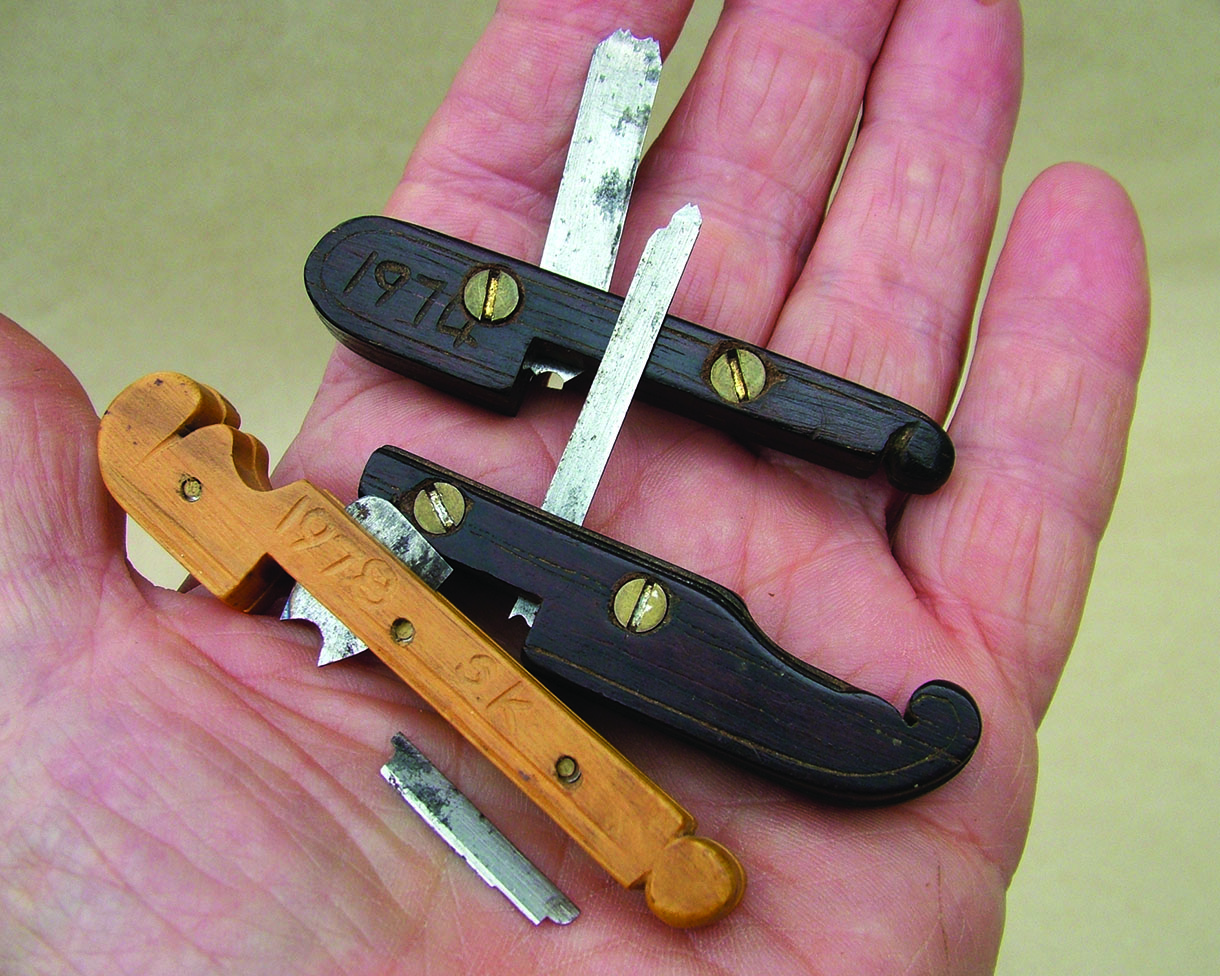
A hand made boxwood miniature scratch stock with a selection of profiled blades
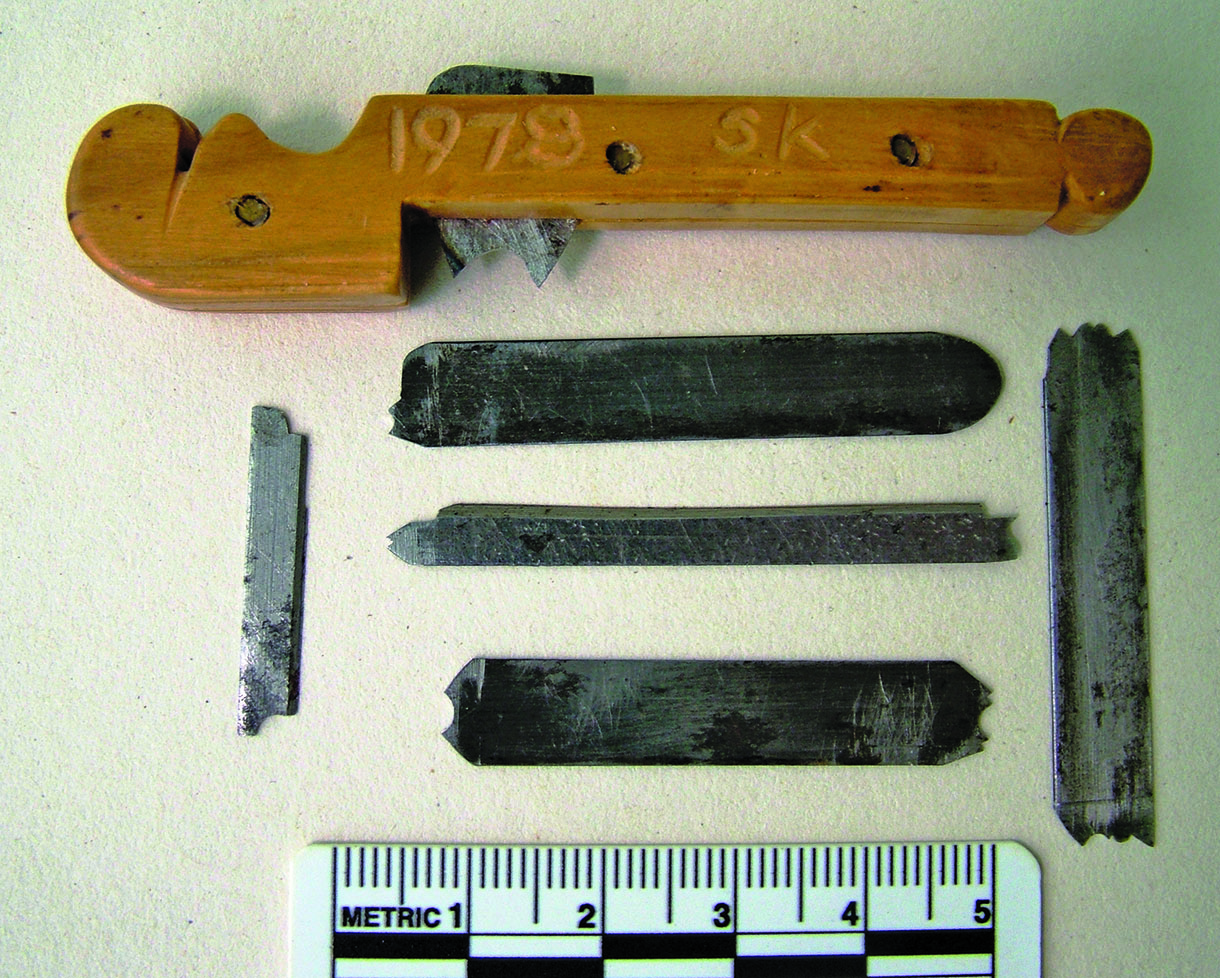
Three scratch stocks made in the early 1970s. It is always a pleasure to make ones own tools and then use them
on a project


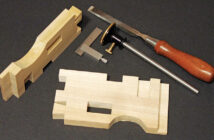
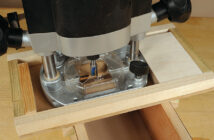
1 Comment
Your furniture is lovely. I don’t need any furniture right now but I would like a simple doll house.
Is this something you could make?
Thanks.
Elaine Blaugrund
310-743-7363
elaineblaugrund@gmail.comI1